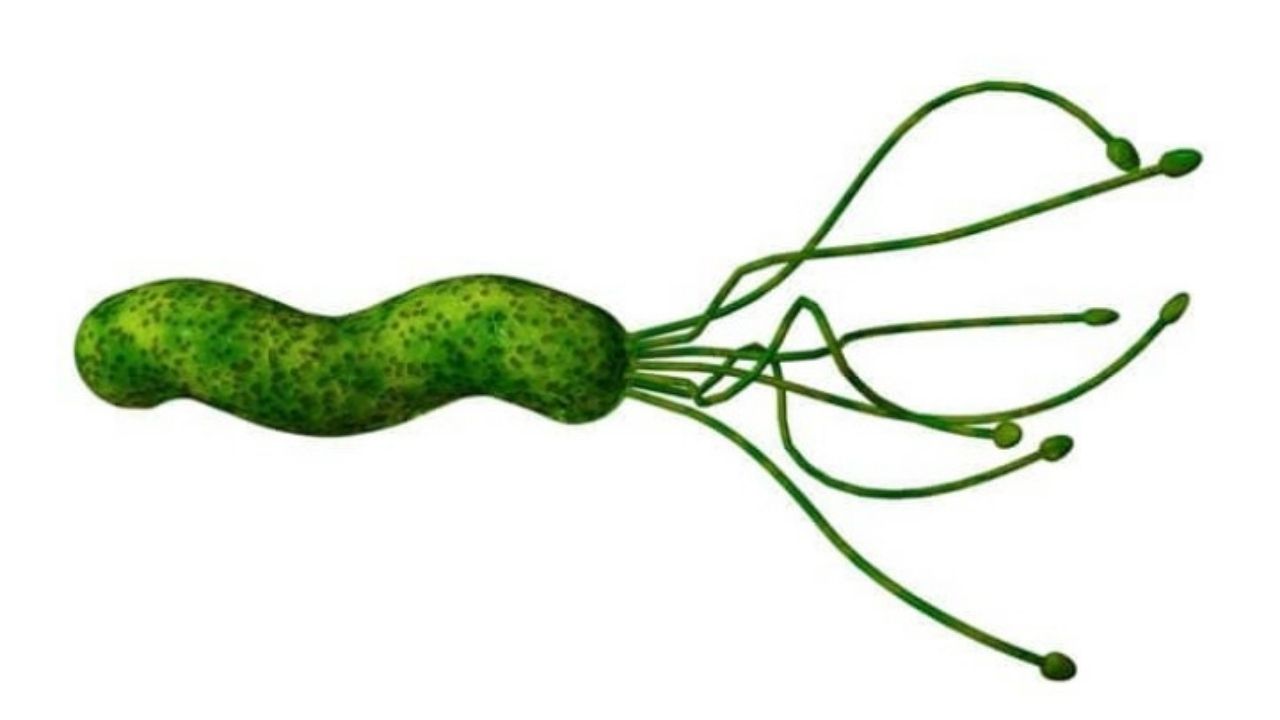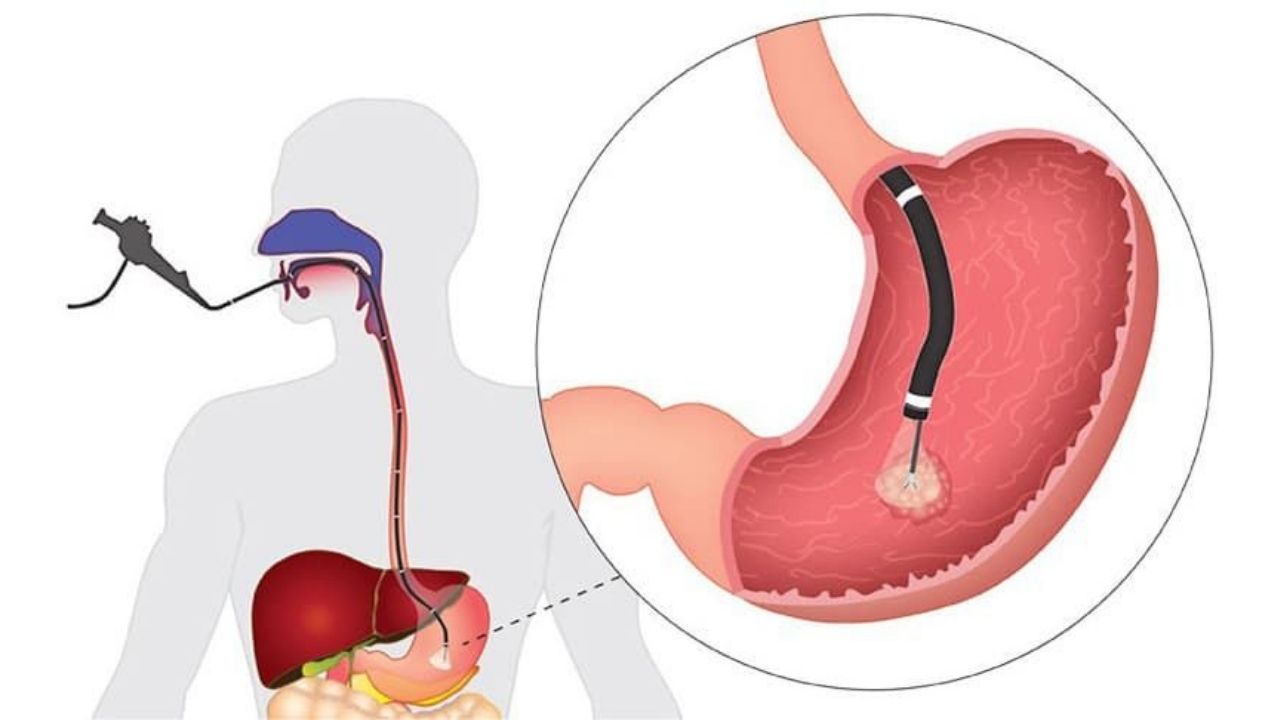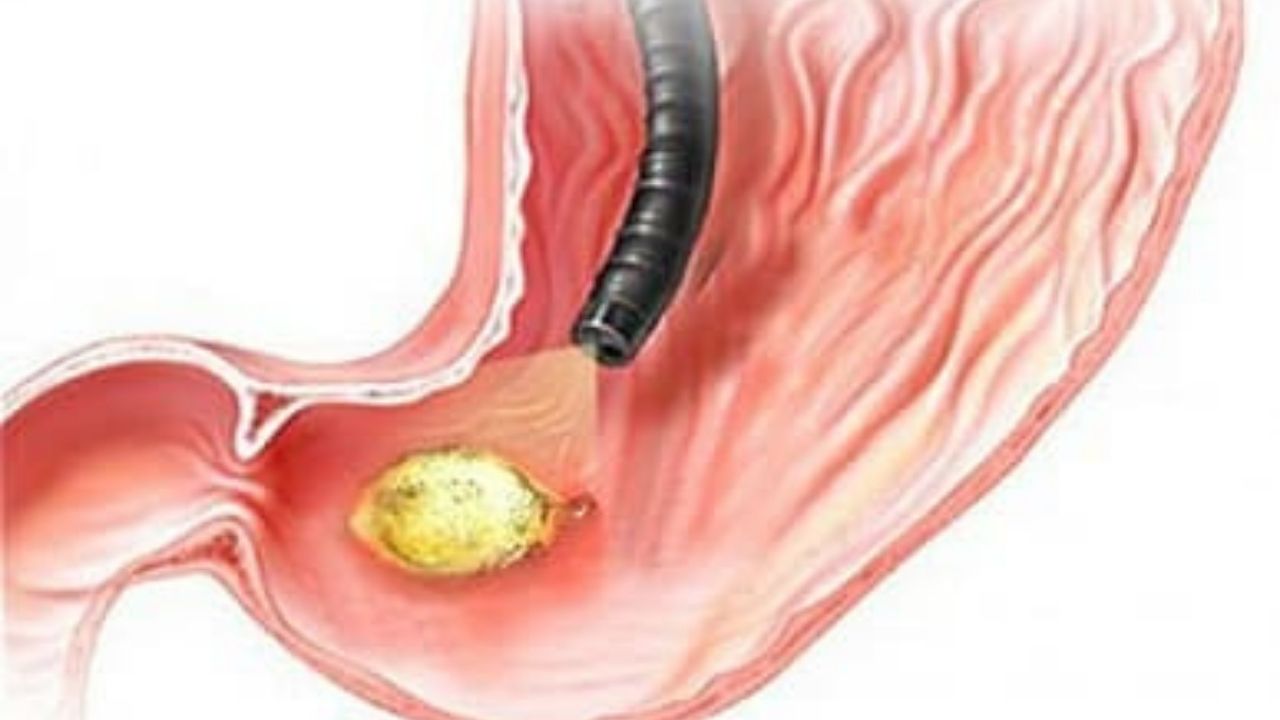Peptic ulcer of the stomach or duodenum is a chronic disease, the morphological substrate of which is recurrent damage to the gastric wall or the wall of the duodenum, which occurs as a result of a violation of the mechanisms of regulation of gastric secretion.
What is gastric ulcer and duodenal ulcer?
A set of substances that are peptic aggressors regularly enter the stomach cavity: hydrochloric acid, enzymes. Their action is aimed at breaking down food. In order for these substances not to damage the wall of the stomach or duodenum, a special protective factor is produced in the stomach, which consists of mucus and bicarbonates.
- The predominance of aggressive factors in combination with the depletion of the protective layer leads to damage to the stomach wall.
- Erosion appears, and then an ulcer.
- The acidic contents of the stomach enter the duodenum.
- Inflammation occurs – duodenitis; erosion and ulcers can also develop in its mucous membrane.
- Particular importance in the development of the problem is attached to the microbe – Helicobacter pylori, which aggravates and provokes damage to the mucous membrane of both the stomach and duodenum.
The chronic nature of the pathology provides for the alternation of exacerbations and remissions. Exacerbations occur against the background of physical and mental overload, diet disorders, bad habits.
Peptic ulcer disease often affects men. The working age of the main group of patients with gastric ulcer indicates the social and economic significance of the problem.
Causes of peptic ulcer of the stomach (duodenum)
Distinguish between etiological factors of the disease and risk factors that increase the likelihood of ulcers. Among the causes of peptic ulcer disease, the following are distinguished:

- the presence of the bacteria Helicobacter pylori in the body
- decreased local immunity in the stomach
- burdened heredity
- imbalance between the protective factors of the gastric mucosa and its secretion
- taking certain medications.
Among the drugs that destroy the gastric mucosa, non-steroidal anti-inflammatory drugs (NSAIDs) should be singled out. Long-term treatment with their help, without proper protection of the mucous membrane, leads to the appearance of ulcers, bleeding from them.
Factors that contribute to the appearance of an ulcer:
- stress
- physical overvoltage
- alcohol exposure
- smoking
- eating harmful foods (spicy, smoked, fried)
- violation of the diet.
what are symptoms of peptic ulcer of the stomach
- Symptoms of the disease usually appear quite brightly, which makes it possible to timely identify the disease and begin appropriate treatment. The main symptom is pain, depending on the nature of the pain, you can understand exactly where the ulcer is located. The timing of the onset of pain is also important. For peptic ulcer with localization of ulcers in the stomach, the so-called “hunger pains” are characteristic, which appear on an empty stomach, as well as a few hours after eating.
- If the cardiac part of the stomach is affected (it is adjacent to the esophagus), then pain occurs closer to the solar plexus 20 minutes after eating. It is not uncommon for the pain to spread to the chest in the region of the heart, which can be confusing and lead to misdiagnoses such as heart attack when trying to self-diagnose. Such localization of peptic ulcer disease is never accompanied by pain after exercise.
- The defeat of the pyloric stomach ulcer (closer to the duodenum) causes prolonged acute pain, manifested in attacks. Sometimes the duration of one attack can be more than 40 minutes. The pain develops an hour after eating. May occur at night. Dyspeptic symptoms often occur: nausea, bloating, vomiting. Ulcer of this localization 5-10% becomes malignant. Also, there are frequent complications, penetration, perforation, bleeding, pyloric stenosis due to cicatricial deformity.
- 10-15% of ulcers are localized in the antrum, located between the pyloric and cardiac. Moreover, if the defective formation is in the lesser curvature of the stomach, the patient will feel severe pain in the left hypochondrium 1-1.5 hours after eating. The stabilization of the condition occurs after the contents of the stomach have been digested. Most of these patients experience pain in the evening.
- The ulcer defect localized in the greater curvature of the stomach is characterized by a less pronounced clinic, occurs less often, more often in the elderly, and in 50% of cases has a malignant character, moreover, it is quite difficult to detect such an ulcer.
- Incessant aching pain, experienced mainly in the evening and at night, may indicate the location of the defective formation in the antrum. In this case, the pain syndrome does not correlate with food intake.
- The nature of pain in duodenal ulcer is characterized by the fact that it appears 1.5-2 hours after eating, often at night. This localization of the ulcer is more common in men under 40. The genetic factor is more significant for this category of patients. Dyspeptic disorders are less common than with localization in the stomach, but quite often patients are concerned about constipation.
Other signs of peptic ulcer of the stomach
In addition to painful sensations of the presence of peptic ulcer disease, the following symptoms may also indicate:
- Nausea, sometimes accompanied by vomiting. This is due to a violation of gastric motility. In the presence of an ulcer, vomiting may begin 2 hours after eating.
- Heartburn , Most patients suffer from this symptom, which manifests itself as a burning sensation in the epigastric region. With heartburn, the acidic contents of the stomach are in the lumen of the esophagus, which is accompanied by a rather unpleasant sensation.
- Feeling of heaviness in the abdomen. It is observed after eating, and, regardless of the amount eaten.
- Poor appetite. The symptom is associated with a fear of heartburn and vomiting, which torment the patient after eating. This is a psychological factor that explains the deterioration in appetite by the patient’s desire to avoid unpleasant sensations.
- Belching with air can also be accompanied by the throwing of stomach contents into the oral cavity, after which an unpleasant sour or bitter taste remains in the mouth.
- Increased gas formation.
Patients often complain of constipation caused by intestinal dysfunction. Among the atypical symptoms, one can distinguish a white coating on the tongue, sweating of the palms, pain when pressing on the abdomen.
Sometimes the Peptic ulcer of the stomach does not manifest itself with any symptoms, in which case it can be found in a rather neglected state.
Complications of peptic ulcer of the stomach
If left untreated, complications can develop. There are 5 conditions that threaten the patient if the ulcer is not treated:
- Ulcer perforation – perforation of the stomach wall through and through.
- Bleeding – if the integrity of the blood vessel in the walls or at the bottom of the ulcer is broken.
- Stenosis of the pyloric stomach is a narrowing of the exit site from the stomach, the accumulation of food there.
- Penetration of an ulcer – perforation of an ulcer into a neighboring organ.
- Malignant ulcer – the growth of a malignant tumor.
Diagnosis of peptic ulcer of the stomach
In order to make a final diagnosis, it is necessary to undergo esophagogastroduodenoscopy (EGDS), the more common name is gastroscopy.

An endoscope is inserted through the mouth and esophagus into the stomachIs a thin tube that is equipped with a special optical device. So, the doctor gets the opportunity to clearly see the inside of the gastrointestinal tract.
Endoscopy allows you to assess the size of the ulcer, the number (with multiple process), localization, the presence of complications.
During the study, samples of gastric juice, mucosal biopsy for morphological examination and the presence of Helicobacter pylori are taken.
If the patient does not tolerate the procedure of such a study, it is recommended to use medication sleep. To clarify the depth of the ulcer, gastrointestinal motility, some complications of Peptic ulcer of the stomach, such as stenosis, penetration, etc., fluoroscopy and radiography with a contrast agent are used.
Diagnostic procedures may also include Helicobacter pylori tests, laboratory tests of urine, blood, and feces.
Treatment methods for peptic ulcer of the stomach
It is important for patients to adhere to the established daily regimen, avoid stressful situations, if possible, do not resort to smoking and drinking alcoholic beverages, at least for the duration of treatment, follow the diet prescribed by the doctor, adhere to the correct daily regimen.
As usual, the duration of an active course of treatment is about two weeks, and then supportive therapy is needed with the obligatory observance of proper nutrition.
For each patient, an individual treatment is selected taking into account such significant factors as age, physical condition, the presence or absence of concomitant chronic diseases.
A Peptic ulcer of the stomach is characterized as a rather serious, deadly disease, therefore, at the slightest suspicion, you should immediately undergo a diagnosis by visiting a specialist doctor.
Drug therapy consists of the following drugs:
- antibacterial drugs – the action is aimed at eliminating Helicobacter pylori from the body;
- antacids – drugs that reduce the secretion of gastric juice;
- proton pump inhibitors – their action affects the chemical composition of hydrochloric acid, disrupts its structure;
- H2 histamine blockers – reduce the aggression of gastric secretions;
- antispasmodics are symptomatic drugs that relieve pain.
Medicines must be taken strictly on the advice of a doctor. Each of the medicines is indicated only in certain circumstances of the disease. Medication must be taken within the prescribed period.
If the patient feels relief, this does not mean that the drugs can be canceled on their own. The process of drug treatment is controlled by the attending physician, only he can make all changes to the reception.
Surgical treatment (surgery to remove stomach ulcers)
The need for surgical intervention may arise only with long-term non-healing ulcers, or with the appearance of complications. Such an operation can be planned or carried out urgently.
Emergency surgery is indicated for perforation of an ulcer, bleeding that cannot be stopped with conservative measures. The ulcer is sutured, bleeding is stopped, and the narrowing of the digestive tube expands.
The previously used planned operations to remove a section of the stomach in order to reduce its secretion are currently practically not used, since a properly selected modern drug treatment, as a rule, leads to remission.
In case of malignancy of an ulcer, surgical treatment is necessary, the volume of which depends on how early the tumor is detected – whether it has managed to germinate all layers of the stomach, or has only affected the mucous and submucous layers, whether it has managed to spread to nearby organs or lymph nodes, or has it already gave metastases to distant organs.
The earlier the malignancy of the ulcer is detected, the less will be the volume of surgical intervention. In this case, the operation to remove the ulcer can be performed endoscopically or laparoscopically. Otherwise, extended intervention is performed in the traditional way.
Prevention of gastric ulcer
As a Prevention of gastric ulcer, you should:
- devote at least 6 to 8 hours a day to sleep;
- minimize the consumption of smoked, fatty and fried foods, such food irritates the mucous membrane;
- monitor the health of your teeth in order to always be able to chew food well;
- avoid frequent stressful situations, as they lead to nervous tension and cause pain in the stomach;
- do not drink alcoholic beverages or smoke;
- in case of pain in the stomach, undergo the necessary examinations;
- increase the number of meals to 6 per day. Food should be chopped, jelly, porridge, steamed meat, omelet, vegetables are shown.
Important key points
- It should not be forgotten that a Peptic ulcer of the stomach affects the functioning of the whole organism, and therefore it is better to prevent this disease than to then adapt to it all your life, relieving the torment with medicines.
- Seizures can be prevented by following a diet and proper diet, avoiding alcohol and cigarettes. You should visit a doctor at least once a year. For prophylactic purposes, patients are prescribed antiulcer drugs in courses, in spring and summer. It was at this time that the disease makes itself felt as the most striking manifestation of symptoms.
- It is also necessary to remember for patients suffering from Peptic ulcer of the stomach, disease about the annual endoscopic control, which must be carried out even in the absence of pain after the ulcer has healed. The need for such control is associated with a high probability of malignancy of gastric ulcers.
